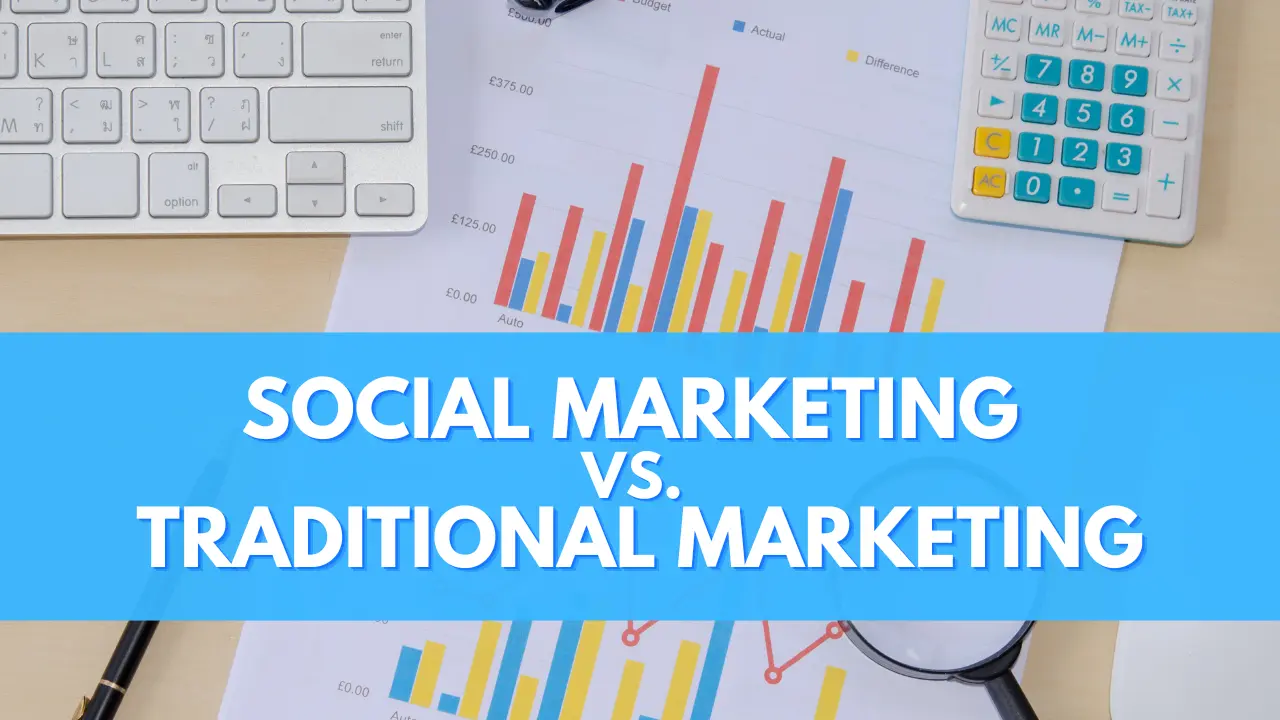Social marketing refers to the use of social media platforms to promote products or services, while traditional marketing involves conventional methods such as print, television, and radio advertising.
Both forms of marketing have their unique advantages and challenges, making it crucial for businesses to understand which approach best suits their needs.
The Power of Social Marketing
The rise of social media has transformed the way businesses interact with customers, providing unparalleled opportunities for direct engagement. Social marketing offers a cost-effective means of reaching a vast audience, allowing businesses to tailor their content to specific target demographics. Additionally, social media facilitates real-time communication between businesses and consumers, fostering strong relationships and enhancing customer loyalty.
The Enduring Appeal of Traditional Marketing
Despite the meteoric rise of social media, traditional marketing techniques remain relevant and effective. Print, television, and radio ads provide a sense of credibility and familiarity, which can be invaluable in building brand recognition. Furthermore, traditional marketing channels often reach a broader audience, including those who may not be active on social media platforms.
Comparing Costs and ROI
One of the primary distinctions between social and traditional marketing lies in their respective costs and return on investment (ROI). Social marketing campaigns are generally less expensive to execute, with the potential for significant organic reach. However, businesses should be prepared to invest in paid social media advertising to amplify their message and ensure visibility.
On the other hand, traditional marketing methods typically require a larger initial investment but often yield a more predictable and stable ROI. The effectiveness of traditional marketing campaigns can be easily measured, making it simple for businesses to assess the success of their efforts and adjust accordingly.
Leveraging Data and Analytics
In today’s data-driven world, businesses must utilize data and analytics to inform their marketing strategies. Social marketing offers unparalleled access to customer insights, enabling businesses to create highly targeted campaigns that resonate with their audience. With sophisticated analytics tools, marketers can track the performance of social media posts, measure engagement, and identify trends in consumer behavior.
While traditional marketing methods may not provide the same level of data granularity, businesses can still gather valuable insights from customer surveys, focus groups, and market research. By leveraging this information, companies can tailor their traditional marketing campaigns to better align with their target audience’s preferences.
Navigating Platform Limitations and Restrictions
Both social and traditional marketing strategies come with their own set of limitations and restrictions. Social media platforms are subject to frequent updates and changes in algorithms, which can affect the visibility and reach of marketing content. Additionally, some platforms have strict guidelines on content and advertising, potentially limiting a business’s creative freedom.
Traditional marketing channels, too, face limitations, such as time slots for television and radio ads or space constraints in print media. However, these restrictions can also inspire businesses to develop more concise and impactful messaging that resonates with their audience.
Integrating Social and Traditional Marketing Strategies
Rather than viewing social and traditional marketing as mutually exclusive approaches, businesses should consider the benefits of integrating both methods into their overall marketing strategy. A comprehensive approach allows companies to capitalize on the unique strengths of each marketing method, creating a cohesive brand presence across multiple channels.
For instance, businesses can use social media to share engaging content, drive website traffic, and engage with customers in real-time, while leveraging traditional marketing techniques to build brand awareness and reach a broader audience. By combining these strategies, businesses can create a synergistic effect that maximizes their marketing efforts and drives growth.
Final Thoughts on Social Marketing vs. Traditional Marketing
Ultimately, the choice between social marketing and traditional marketing depends on a business’s unique goals, resources, and target audience. While social marketing offers cost-effective opportunities for targeting and engaging with specific demographics, traditional marketing remains a powerful tool for building brand recognition and reaching a wider audience. By integrating both approaches into a comprehensive marketing strategy, businesses can capitalize on the strengths of each method and achieve optimal results.
Social Marketing vs. Traditional Marketing
| Criteria | Social Marketing | Traditional Marketing |
|---|---|---|
| Reach | Targeted demographics, mostly younger audience | Broader audience, including non-social media users |
| Cost | Generally lower, but may require paid advertising | Higher initial investment |
| ROI | Potentially higher but less predictable | More stable and predictable |
| Data & Analytics | Detailed insights, real-time tracking | Less granular, relies on surveys and market research |
| Platform Limitations & Restrictions | Algorithm changes, content guidelines | Time/space constraints |
| Engagement | Direct communication, real-time interaction | Limited direct engagement |
| Adaptability | The broader audience, including non-social media users | More difficult and time-consuming to modify |
| Measurability | Easy to track engagement and performance | Less precise, relies on traditional metrics |
| Brand Building | Stronger relationship building with customers | Greater credibility and familiarity |
| Integration with Other Marketing | Can easily complement traditional marketing efforts | Can support and amplify social marketing campaigns |
Evaluating Your Business’s Marketing Needs
When deciding between social and traditional marketing, it’s crucial for businesses to carefully evaluate their specific needs and objectives. Consider factors such as target audience demographics, budget constraints, and the nature of the product or service being promoted. Understanding these elements can help businesses craft a marketing strategy that effectively combines the best of both worlds.
Embracing Change and Adaptability
The marketing landscape is constantly evolving, with new platforms, technologies, and trends emerging at a rapid pace. To stay competitive, businesses must be prepared to adapt their marketing strategies to keep up with these changes. This may involve exploring new social media platforms, experimenting with cutting-edge advertising techniques, or finding innovative ways to blend traditional and digital marketing.
Continually Assessing and Adjusting Your Marketing Strategy
A successful marketing strategy is not a one-size-fits-all solution. Businesses should continually assess the performance of their marketing efforts, using data and analytics to identify areas for improvement and adjust their strategies accordingly. By staying attuned to changes in consumer behavior, market trends, and the competitive landscape, businesses can optimize their marketing strategies for maximum impact.
The Future of Marketing: Embracing a Hybrid Approach
As the lines between social and traditional marketing continue to blur, businesses must embrace a hybrid approach that leverages the strengths of both methods. This may involve using social media to augment traditional marketing campaigns or utilizing traditional media to support and amplify social marketing efforts. By embracing this integrated approach, businesses can create a cohesive and powerful marketing strategy that drives growth and success in today’s ever-changing marketplace.
Conclusion
In conclusion, the choice between social marketing and traditional marketing should not be an either/or decision. Instead, businesses should focus on developing a strategic marketing plan that combines the best elements of both methods, tailored to their unique needs and objectives. By embracing a hybrid approach and continually assessing and adjusting their marketing strategies, businesses can ensure they remain competitive and successful in an ever-evolving marketing landscape.




